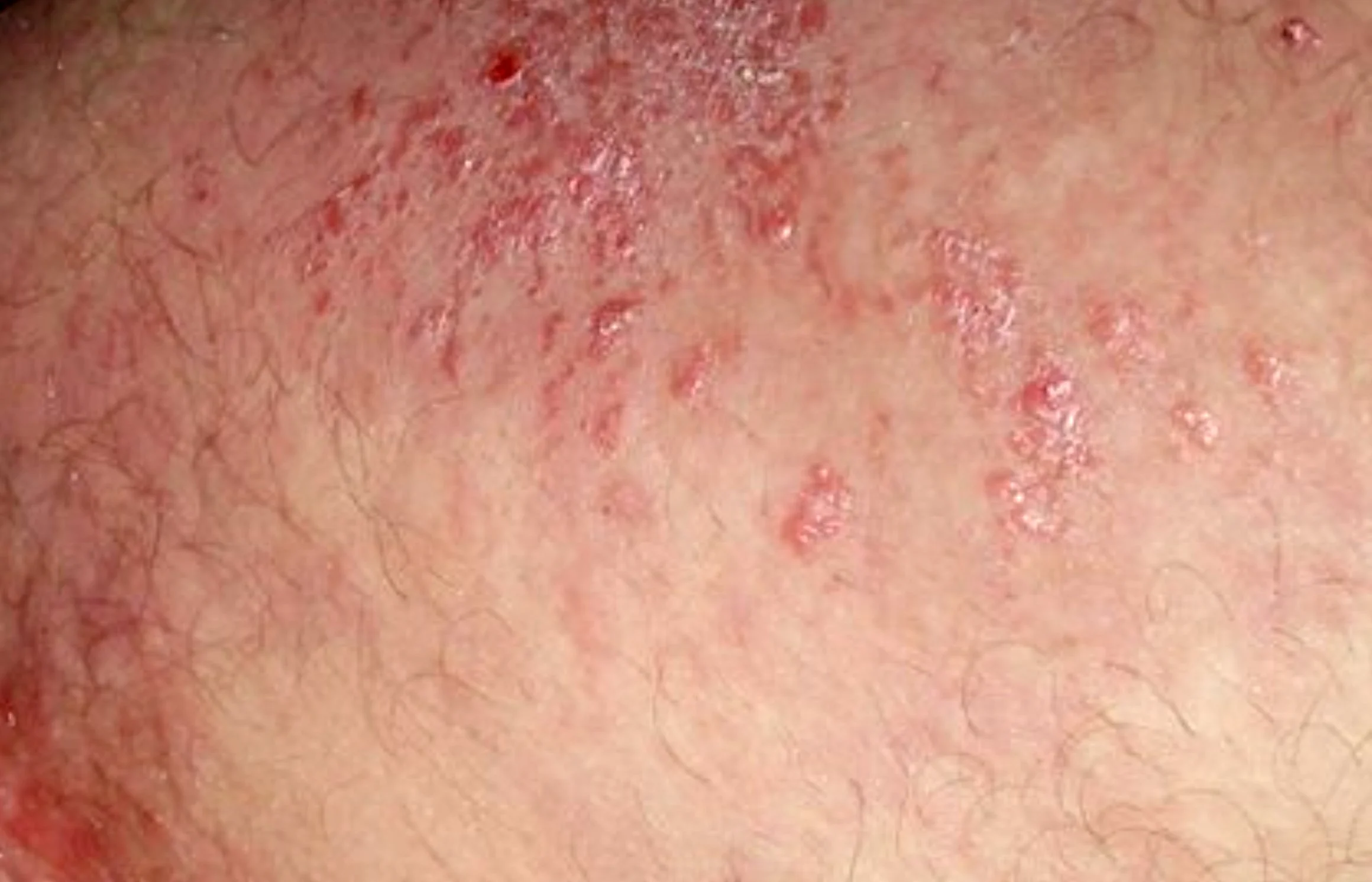Jock Itch or Cancer?
EMPD vs. Jock Itch: Why Similar Symptoms Can Lead to a Misdiagnosis
Imagine enduring relentless itching and a stubborn rash, only to face the daunting uncertainty of whether it’s just jock itch or something far more serious. Jock itch, or tinea cruris, is a common fungal infection that primarily affects the groin area. It’s usually harmless but can be extremely uncomfortable, causing intense itching, redness, and a rash.
Though typically benign, jock itch can spread to adjacent areas like the inner thighs, buttocks, or abdomen if left untreated, potentially leading to secondary bacterial infections. The condition is caused by dermatophytes, fungi that thrive in warm, moist environments. Risk factors include excessive sweating, tight clothing, and poor hygiene. Treatment usually involves antifungal creams or ointments, and maintaining good hygiene can prevent recurrence.
But here’s where it gets complicated. The symptoms of tinea cruris can closely resemble those of extramammary Paget’s disease (EMPD), a rare and far more serious condition. Both present with a red, itchy rash, which can blur the lines between a common fungal infection and a potentially life-threatening cancer.
Extramammary Paget’s disease (EMPD) is a cancer that typically manifests as a persistent rash. If left untreated, it can invade deeper tissues, affect lymph nodes, and even metastasize to distant organs. At the microscopic level, EMPD shares similarities with Paget's disease of the breast. Early diagnosis and prompt treatment are crucial for managing EMPD effectively.
The vulva is the most common site for extramammary Paget’s disease (EMPD), involved in about 65% of cases. The perianal area is affected in roughly 20% of diagnoses, while the scrotum and penis account for approximately 14%. EMPD outside the genital or anal areas is rare, making up less than 1% of cases.
Accurate diagnosis is essential due to the different underlying causes and treatment needs of these conditions. While tinea cruris can be managed with antifungal treatments, extramammary Paget’s disease (EMPD) requires specific diagnostic procedures, including a biopsy and specialized tests, to confirm the presence of cancer. Given that EMPD is infrequently encountered by many physicians, diagnosis can be challenging and delays are not uncommon.
If you’re experiencing persistent itching, significant changes in your skin, or have other health concerns, seek medical advice. A thorough examination by a healthcare provider can help differentiate between jock itch and more serious conditions like extramammary Paget’s disease (EMPD). Recognizing the similarities and differences is key to ensuring timely and effective treatment.
For more insight into the diagnostic challenges associated with EMPD, check out these articles:
"Doctors thought he just had jock itch. Then it spread."
"Hoping to find other patients, he revealed a cancer often mistaken for 'jock itch'."
Learn more about extramammary Paget’s disease (EMPD)
Read More →Learn about EMPD symptoms
Read More →This information was written by EMPD patients and family members and is believed to be accurate at the time of publication. The content on this website, including text and visual materials, is intended to raise awareness of extramammary Paget’s disease (EMPD) and help individuals understand its complexities. However, it is not a substitute for professional medical advice, diagnosis, or treatment, nor does it endorse any specific treatments, tests, physicians, procedures, or products. If you suspect symptoms of EMPD, we encourage you to consult a qualified healthcare provider for proper evaluation and guidance.

